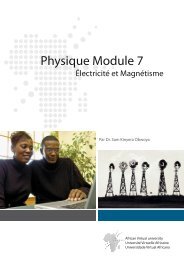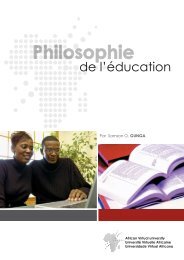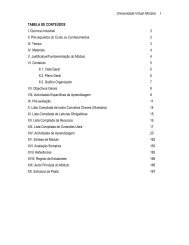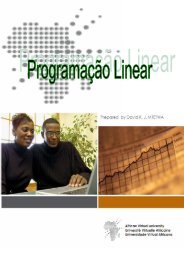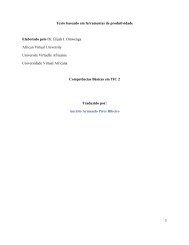Comparative Education.pdf - OER@AVU - African Virtual University
Comparative Education.pdf - OER@AVU - African Virtual University
Comparative Education.pdf - OER@AVU - African Virtual University
Create successful ePaper yourself
Turn your PDF publications into a flip-book with our unique Google optimized e-Paper software.
Figure 1: Zambia Ministry of <strong>Education</strong><br />
Figure 1: Zambia Ministry of <strong>Education</strong><br />
Planning and<br />
Information<br />
Teacher<br />
<strong>Education</strong><br />
District <strong>Education</strong> Boards<br />
(12)<br />
Basic Schools (4,720)<br />
Minister<br />
Deputy Minister<br />
Permanent Secretary<br />
Integrated Financial<br />
Management Information<br />
Systems and Public<br />
Expenditure Tracking<br />
Provinces (9)<br />
Provincial <strong>Education</strong> Office<br />
College Boards (14)<br />
Source: World Bank (2008). Working Paper No.127<br />
Source: World Bank (2008). Working Paper No.127<br />
<strong>African</strong> <strong>Virtual</strong> <strong>University</strong><br />
Most countries in Africa and Latin America stipulate that education is compulsory<br />
at least at basic school or primary school level, but several challenges including<br />
resource capacity constrain the enforcement of that regulation. The goals of<br />
38<br />
Standards &<br />
Curriculum<br />
High Schools<br />
Boards (353)<br />
Human Resource<br />
Development &<br />
Administration<br />
education tend to emphasize the personal development and skill acquisition for<br />
the labor market. However as discussed in Learning activity #3 several challenges<br />
limit Sub-Saharan <strong>African</strong> countries’ capacity to provide high quality education.<br />
Matrix 7 shows the goals of education in Brazil and Portugal.







